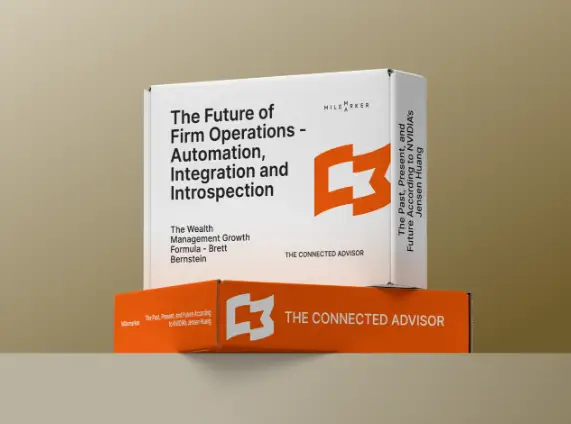The Future of Firm Operations – Automation, Integration and Introspection

“If we can scale to X of clients, we will be able to Y.”
In this age-old fill-in-the-blank equation, firm leaders look to elevate their firm.
Advisory firms now exist in the data-driven, automation era, but the sad truth is that most don’t live in this era.
Things are still clunky.
Systems are too complicated to use.
Support is, at best, spotty and at worst infuriating.
The new order of business has turned dependable solutions into providers focusing more on turning your clients into their clients.
On top of all this, your team, inspired when they joined you, often spends their days doing increasing amounts of administrative work that can steal the joy out of even the most meaningful tasks.
Hopefully, not all of this rings true for you.
Regardless, the future remains ripe for disruption.
So, what can your firm’s operations actually look like?
This week, I’ll walk through three short-term things we can do to transform our firm today that will set us up for a more effective operating model.
Get Serious About Modern Workflows
There seems to be a lot of talk about workflows but much less work to establish or adopt them. Like so much of our work life, there is a gap between the idea of what workflows can do for you and how your workflows truly, well…work.
Theories are a great place to start. Evaluating how your team is operating today is worthwhile. Building a bridge between your ideal and reality is a difficult process. Change management is no joke. You want to take a long, hard look at what you can do to make your advisors actually follow a usable workflow.
What will they choose over emailing, calling, or texting you?
What will give your advisors the confidence to follow the path that you have created for them over how they’ve been getting work done?
Here are three characteristics of great workflows:
Speed – If you always need to open a manual to go hunting for how to do something, humans will inevitably throw out the manual and do it their own way. The greater the success they achieved doing work their own way, the harder it will be to leave their old ways behind.
One way to measure the speed of your workflows are against the e-commerce checkout experience.
Even in a world built for the fastest transaction experience, here are the facts:
– The average cart abandonment rate is 70.19% as of 2023.
– The average e-commerce conversion rate is 2.04% as of August 2023.
– Mobile cart abandonment was 12% higher than desktop cart abandonment as of 2022.
https://boldist.co/marketing-strategy/ecommerce-checkout-best-practices/
While your team is incentivized to push through to the end of their tasks by something other than a package arriving at their house, they are still operating with similar levels of workflow fatigue while they attempt to open an account, prepare a proposal, place a trade or invite your clients to the next event. Remember to keep it simple, streamlined and speedy.
Integration – Your workflows are at their worst when they require people to leave a session and go gather details. The best workflows pull data in from the key systems that advisors rely on when they are needed and allow the team to get their work done with ease. Having integration on lock allows you to graduate to automation, which can help you find scale.
The best systems automatically inform all interested parties if a request is received and assigned. If an issue is stuck, it sends notifications automatically. You’ll probably never be able to program a workflow to resolve every issue, but they should help eliminate the frustration of uncertainty and put your advisors and support team members in the driver’s seat of expectation management.
To get the most out of your integrations, you (or your most operations-minded team member) need to understand what data is available and how you can start working with it. For many of us, we have to more information about how robust our integrations are so that we can create the best possible outcomes.
Personalization – Advisory firms are the poster-children of personalization.
From how you get paid to how you pay your advisors and every report you like to view to keep tabs on the health of your business, no two advisory firms do anything exactly the same. Nearly every advisor has their own unique way of viewing each aspect of the business.
The best workflows help you acknowledge this unavoidable fact without creating constant exceptions. You want, and I’d say need, to keep at least 80% of your work following common, normative workflows.
You can absolutely use data to help support the fastest way from point A to point Z and, where unavoidable, create isolated workflows that are only ever visible to the exceptional cases where there is no alternative.
This is some of the heaviest lifting of running a business. If you’re looking for a guide, my team is happy to discuss how to do this well with you.
Next week, I will turn my attention to the future state – How the work we can do today will compound as we enter the time to come.
